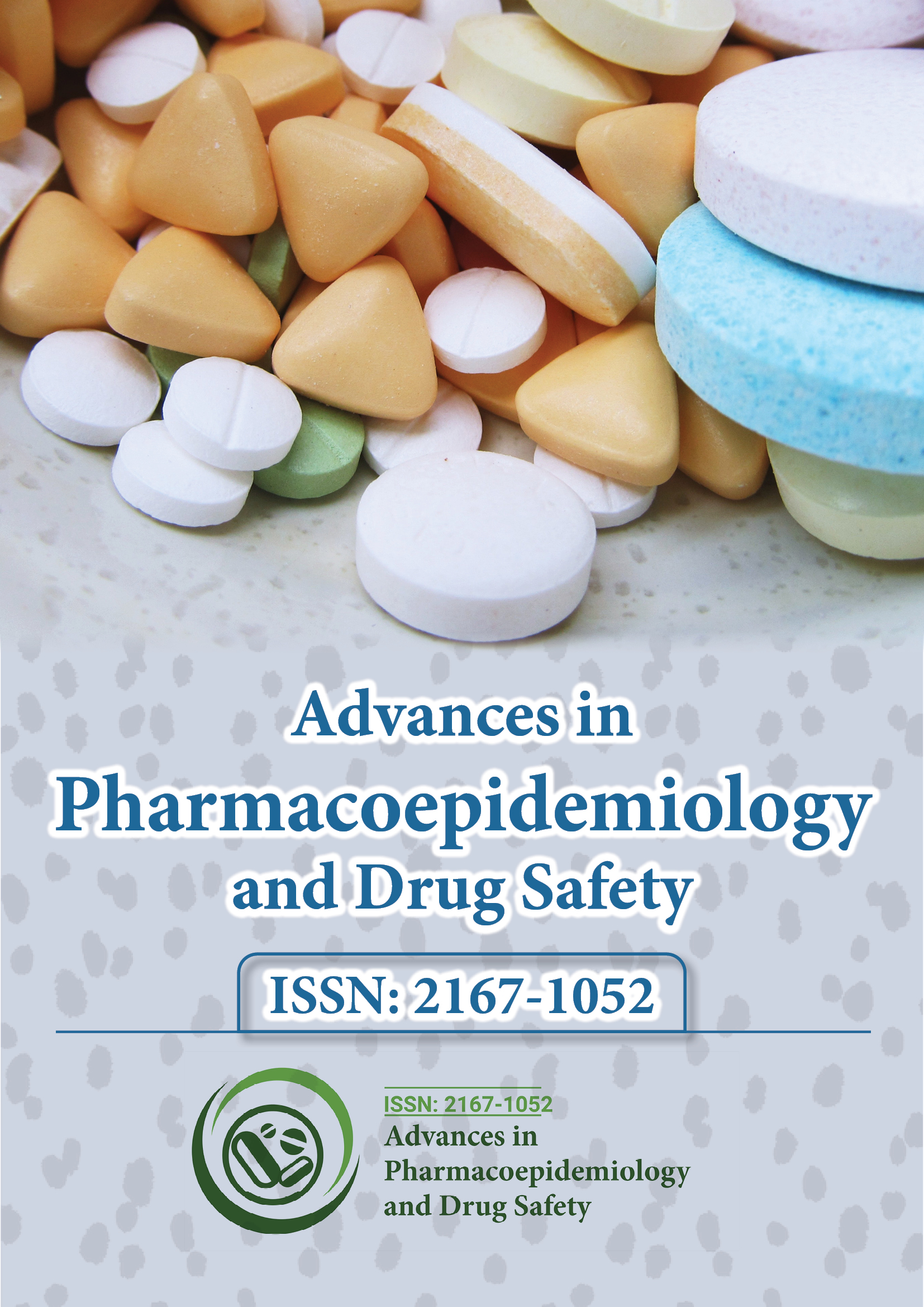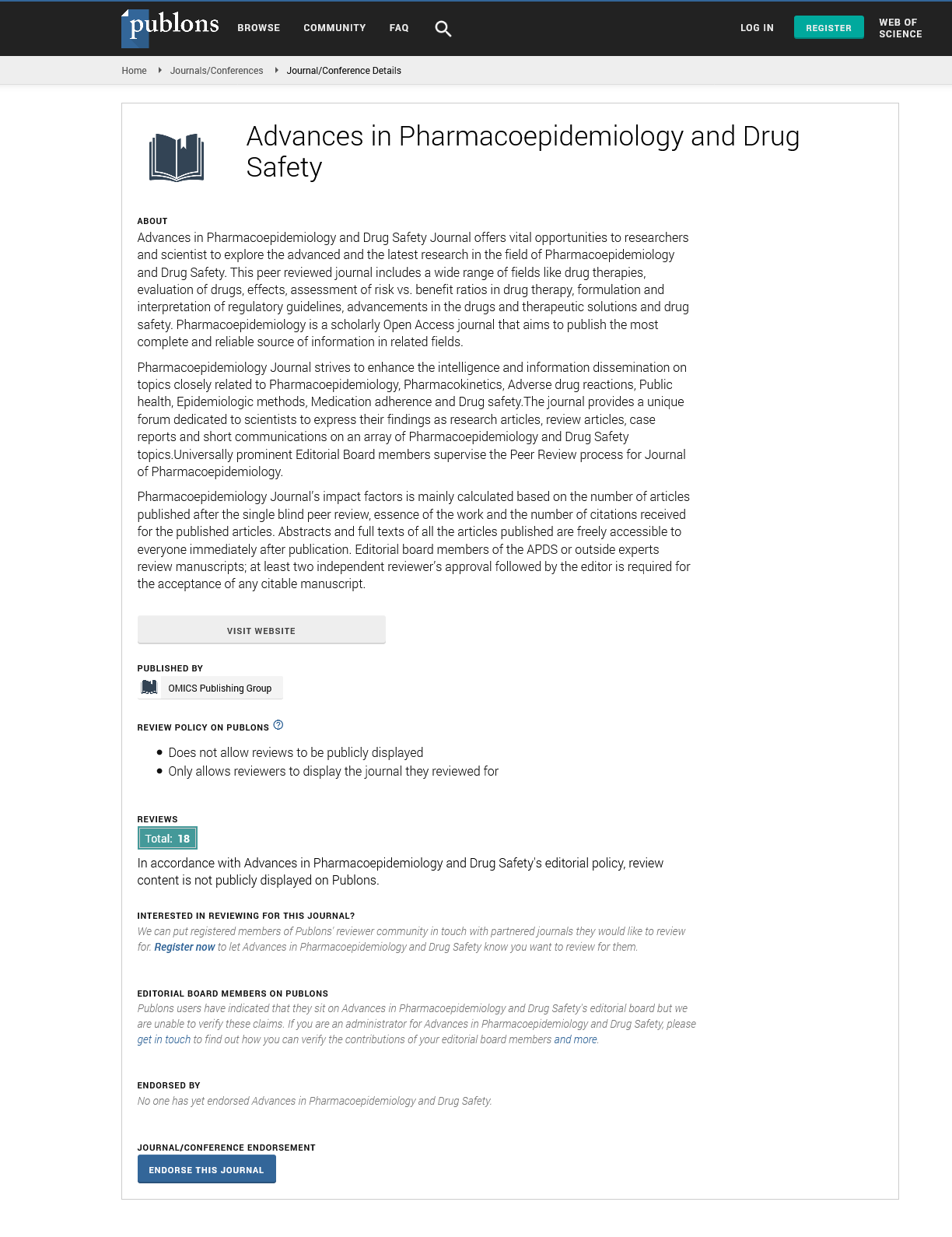Indexed In
- Open J Gate
- Genamics JournalSeek
- Academic Keys
- JournalTOCs
- RefSeek
- Hamdard University
- EBSCO A-Z
- SWB online catalog
- Publons
- Geneva Foundation for Medical Education and Research
- Euro Pub
- Google Scholar
Useful Links
Share This Page
Journal Flyer

Open Access Journals
- Agri and Aquaculture
- Biochemistry
- Bioinformatics & Systems Biology
- Business & Management
- Chemistry
- Clinical Sciences
- Engineering
- Food & Nutrition
- General Science
- Genetics & Molecular Biology
- Immunology & Microbiology
- Medical Sciences
- Neuroscience & Psychology
- Nursing & Health Care
- Pharmaceutical Sciences
Commentary - (2025) Volume 14, Issue 2
Innovations in Monitoring Drug Utilization for Safer Outcomes
Ayumi Nakamura*Received: 29-May-2025, Manuscript No. PDS-25-29850; Editor assigned: 31-May-2025, Pre QC No. PDS-25-29850; Reviewed: 14-Jun-2025, QC No. PDS-25-29850; Revised: 20-Jun-2025, Manuscript No. PDS-25-29850; Published: 28-Jun-2025, DOI: 10.35248/2167-1052.25.14.393
Description
Pharmacoepidemiology has evolved into a critical field that studies how medications are used and what effects they produce in real-world settings. While clinical trials are necessary for assessing drug efficacy and safety, they often involve highly selective patient groups. In contrast, real-life clinical practice includes a much broader range of individuals, many of whom have complex health profiles or multiple co-existing conditions. Because of this, evaluating drug use and outcomes in the general population is essential for identifying risks that may not appear in controlled studies. Understanding how drugs are prescribed, dispensed and consumed requires structured analysis of medication usage patterns. Monitoring these trends helps identify inappropriate prescribing behaviors and highlights safety concerns that could lead to adverse events. This surveillance allows for timely intervention and improves the overall quality of healthcare delivery.
The increasing availability of Electronic Health Records (EHRs) and large-scale prescription databases has significantly improved the ability to study medication practices. Researchers can now access millions of data points across hospitals, clinics and pharmacies to detect unusual trends or off-label drug use. When drugs are administered outside of their approved indications or combined in ways that heighten the risk of harm, pharmacoepidemiological methods can issue early warnings. These insights are critical for guiding clinical decisions and informing regulatory bodies tasked with monitoring drug safety. A major area of progress in recent years has been the analysis of polypharmacy, particularly among older adults. As life expectancy increases, it is common for individuals to be on five or more medications simultaneously. While these drugs may be necessary to manage chronic diseases, such combinations can increase the risk of negative interactions. Pharmacoepidemiologists use population-level data to pinpoint which combinations are more likely to cause issues such as bleeding, kidney injury, or heart rhythm abnormalities. These findings shape evidence-based prescribing guidelines that help reduce harm and improve outcomes for patients.
Another important factor in drug safety is the duration of medication use. Some drugs are only effective when taken continuously over long periods, while others may be harmful if used for too long. Both medication non-adherence and prolonged unnecessary use can lead to complications. By analyzing pharmacy refill data and conducting patient surveys, researchers can better understand adherence patterns. In addition, digital tools like smart pill containers and mobile app reminders are now integrated into studies to capture real-time usage data and improve measurement accuracy. Beyond tracking how drugs are used, identifying Adverse Drug Reactions (ADRs) remains a central goal of pharmacoepidemiology. Traditional systems rely heavily on spontaneous reports from patients and healthcare providers, but these systems often suffer from underreporting and incomplete information. To address this, new strategies now link hospital records, prescribing data and laboratory findings to detect safety concerns earlier. These comprehensive data linkages offer a more robust method for estimating risk and identifying at-risk patient groups.
Cross-country comparisons also contribute to better drug safety knowledge. Medications can produce different outcomes depending on genetic factors, dietary habits, environmental influences and variations in healthcare systems. Collaborative research across regions such as the United States, Europe and Japan has helped generate more inclusive evidence. Such comparisons also highlight different prescribing behaviors shaped by local medical practices and health policies, offering a global perspective on medication safety. The emergence of advanced therapies such as biologics and gene-based treatments has introduced new challenges for post-market surveillance. These therapies often show high efficacy in trials, but their long-term safety in diverse populations is still unknown. Since some adverse effects only become apparent after widespread use, pharmacoepidemiologists are working to establish national and international patient registries. These long-term databases enable systematic monitoring of patients and help guide policy decisions on the continued use of innovative therapies.
Pharmacoepidemiology also plays a key role in public health communication. By translating complex findings into actionable advice, researchers help doctors, patients and policymakers make better-informed decisions about drug use. Transparent communication builds trust in healthcare systems and ensures that safety remains a priority, especially during periods of rapid drug development such as public health emergencies. In conclusion, the monitoring of drug utilization has significantly advanced due to electronic data systems, digital health tools and international cooperation. Pharmacoepidemiology continues to provide critical insights that help detect adverse effects, inform safer prescribing practices and protect patient well-being. As medicine becomes more personalized and treatment options continue to expand, the importance of real-world evidence and post-market surveillance will only grow. Through its ongoing contributions, pharmacoepidemiology remains at the forefront of promoting safe and effective medication use in populations around the world.
Citation: Nakamura A (2025). Innovations in Monitoring Drug Utilization for Safer Outcomes. J Adv Pharmacoepidemiol Drug Saf. 14:393.
Copyright: © 2025 Nakamura A. This is an open access article distributed under the terms of the Creative Commons Attribution License, which permits unrestricted use, distribution and reproduction in any medium, provided the original author and source are credited.

